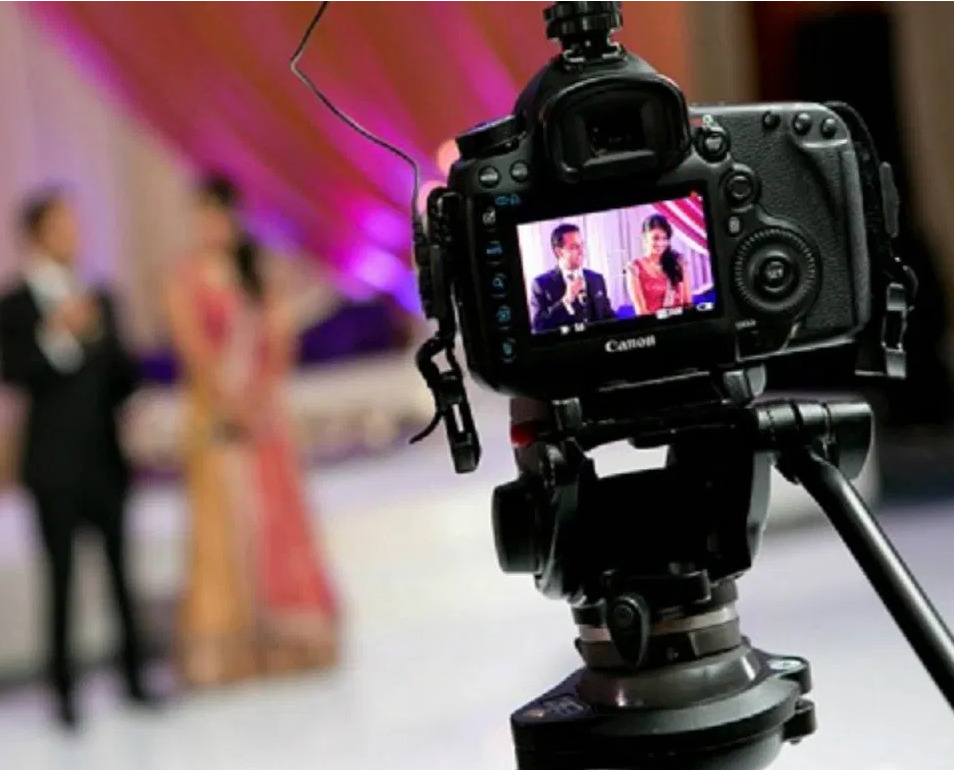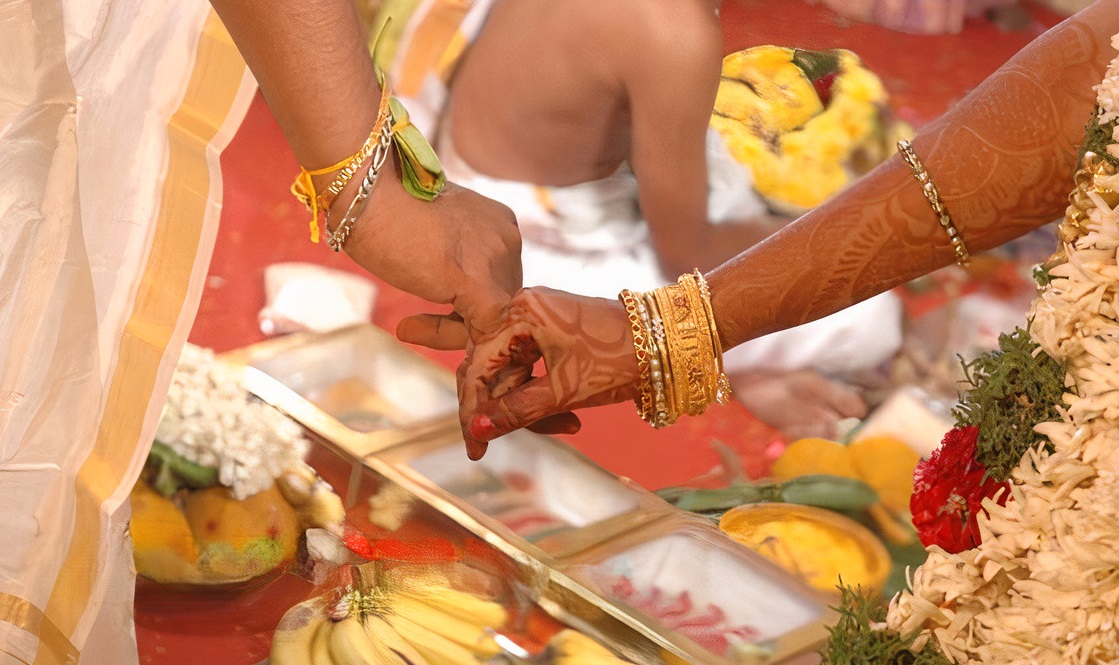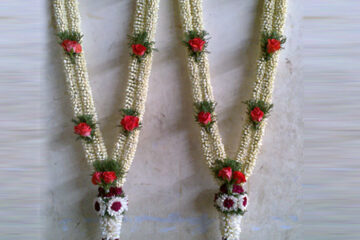South Indian weddings are known for their rich cultural heritage, vibrant rituals, and extravagant celebrations. Steeped in tradition and symbolism, these weddings are a beautiful amalgamation of customs passed down through generations. In this comprehensive blog, we will delve into the various aspects of a typical South Indian wedding and how meticulous planning ensures a seamless and unforgettable event.
Organizing a South Indian wedding requires meticulous planning.

1) Wedding Priest: The priest’s role and the profound significance they hold in South Indian weddings are of utmost importance.
Uncover the details by clicking “here” for an explanation

2) Setting the Date: Choose an auspicious date based on astrological consultations and family preferences.

3) Venue Selection: South Indian weddings are often held in temples, wedding halls, or outdoor venues. Book the venue well in advance.
For a detailed view click “here”

4) Invitations and Invite: Design and send out traditional wedding invitations well ahead of time.Prepare a guest list, considering the number of attendees and ensuring the venue can accommodate them.
For more details click “here”


6) Catering: Plan a sumptuous menu featuring authentic South Indian delicacies to delight the guests.
More details.. “here”

7) Décor: Choose vibrant and traditional décor elements that reflect the cultural essence of the wedding.
View “here” for more details

8) Entertainment : Arrange for traditional music, dance performances, and DJs to keep the guests entertained and to create a harmonious and unforgettable experience.
For a detailed view, click “here“

9) Makeup Artist: A well-planned makeup artist selection adds a touch of glamour and elegance, leaving the bride, groom and the whole family feeling beautiful and picture-perfect on her special day

10) Photography and Videography: Hire professional photographers and videographers to capture every precious moment.

11) Return Gifts: Look for the best Return Gift that can be offered as a token of love to the guests.
Other key checklist to consider are:
- Wedding Venue Lightings Planning
- Guests Stay Planning
- Logistics Planning
- Logistics Planning for Friends and Relatives
- Wedding Garland & Special Flowers Planning
- Pooja Items Planning
Pre-Wedding Rituals:
The main day of a South Indian wedding is preceded by a series of festivities. Pre-wedding rituals include:
- Nischayathartham (Engagement): This ceremony marks the formal announcement of the wedding. The bride and groom exchange rings in the presence of their families and seek their blessings.
- Vratham (Fasting): Both the bride and groom observe a period of fasting a day before the wedding. This ritual signifies their commitment and purity.
- Mehendi Ceremony: The bride’s hands and feet are adorned with intricate henna designs, accompanied by music and dance.
- Sangeet: A joyous occasion where family and friends come together to sing and dance, celebrating the upcoming union.
- Haldi Ceremony: A paste of turmeric, sandalwood, and other auspicious ingredients is applied to the bride and groom’s skin to enhance their beauty and bless them.
The Wedding Day:
The wedding day is the pinnacle of the celebrations, with a series of ceremonies and rituals taking place.
- Ganesh Puja: Before any auspicious event, South Indian weddings begin with the invocation of Lord Ganesha for blessings and good fortune.
- Kashi Yatra: An entertaining custom where the groom pretends to leave for Kashi (pilgrimage), and the bride’s father persuades him to marry his daughter instead.
- Maalai Matral (Exchange of Garlands): The bride and groom exchange floral garlands as a symbol of acceptance and mutual respect.
- Oonjal (Swing Ceremony): The couple sits on a swing, and married women from both families sing traditional songs, swinging them gently.
- Kanyadaan: The bride’s father gives her away to the groom, symbolising the entrustment of his daughter’s well-being to her husband.
- Mangalsutra and Saptapadi: The groom ties the sacred mangalsutra (a necklace) around the bride’s neck, and they take seven steps around the sacred fire, pledging to support and love each other.
Post-Wedding Rituals:
The ceremony concludes with several significant rituals:
- Grihapravesh: The bride enters her new home, and the groom’s mother welcomes her by performing an aarti.
- Reception: A lavish event where friends and family come together to congratulate and bless the newlywed couple.
- Vidaai: A poignant moment when the bride bids farewell to her family and leaves with the groom to start her new life.
Conclusion: A South Indian wedding is a grand celebration of love, culture, and tradition. From the vibrant pre-wedding rituals to the touching post-wedding customs, each moment is infused with significance and joy. Through meticulous planning and attention to detail, a South Indian wedding becomes an unforgettable experience, leaving cherished memories for the couple and their families to treasure for a lifetime.




